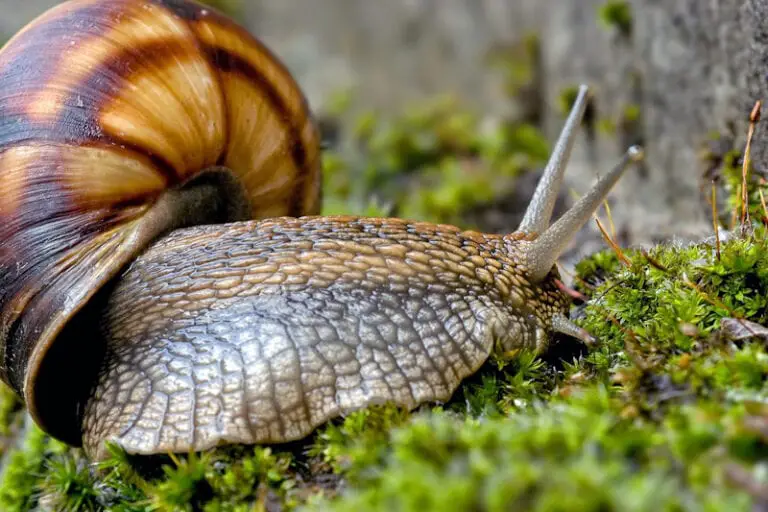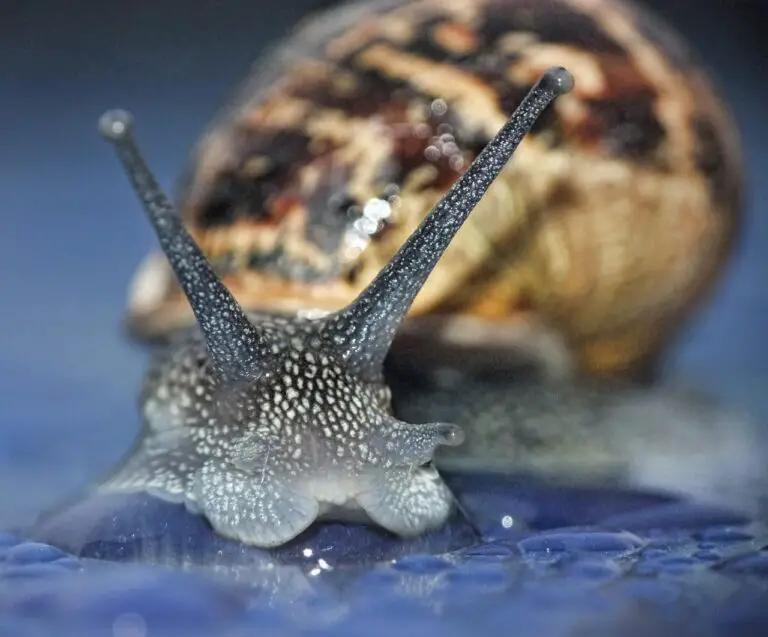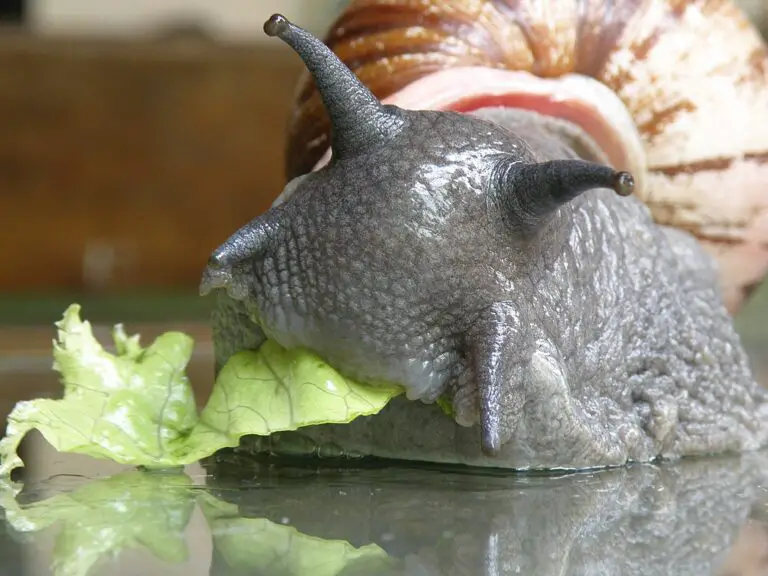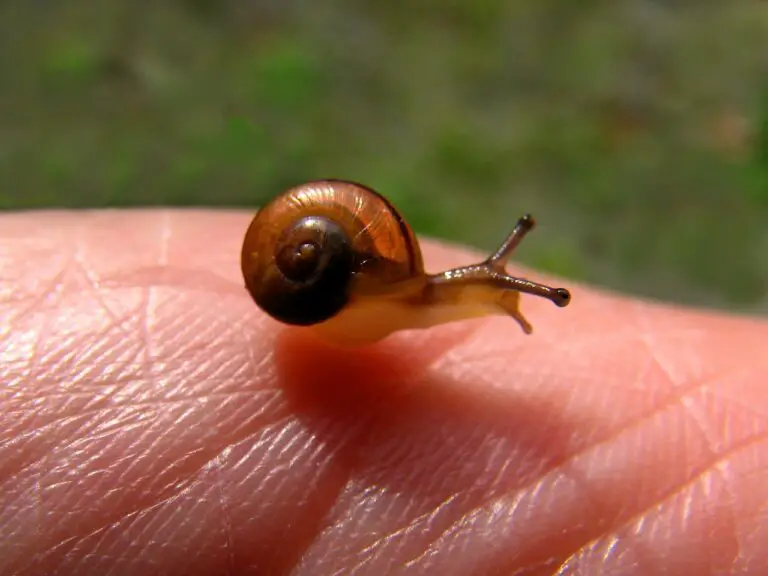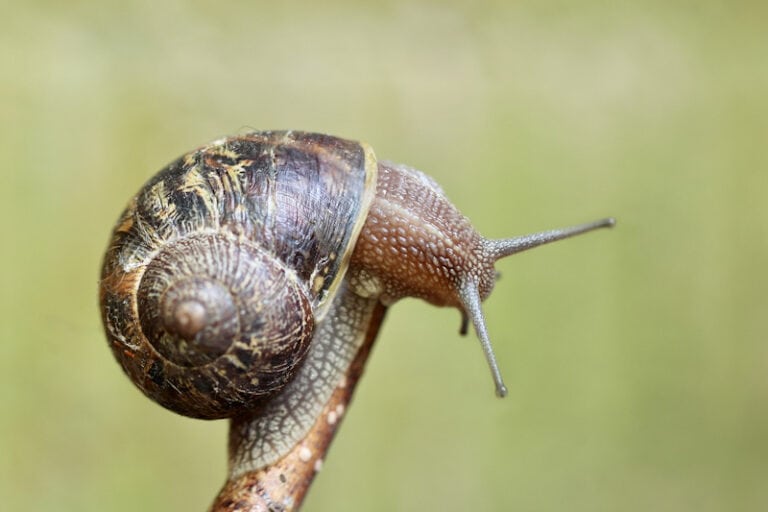The Fascinating World of Snail Eggs
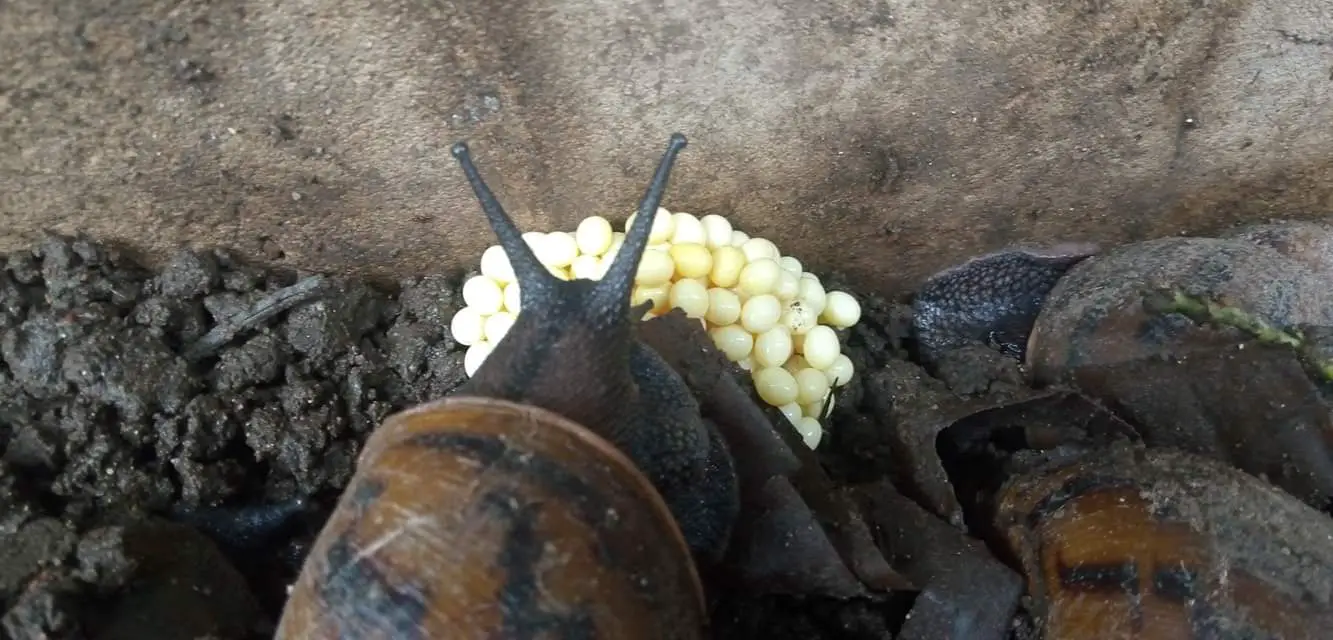
Snails are often thought of as slimy and slow creatures, but did you know that they lay eggs? Yes, snails lay eggs!
These small and fascinating eggs play a crucial role in the life cycle of snails. In this article, we will explore the world of snail eggs and learn why they are so important.
Importance of Snail Eggs in the Life Cycle of Snails
Snail eggs are an essential part of a snail’s life cycle. They provide the next generation to continue on with their existence on earth.
Without these eggs, there would be no more snails to crawl around our gardens or leave trails on sidewalks. The process for a snail egg to hatch into a baby snail is long and complicated.
For many species, it can take up to several weeks or even months for an egg to develop into a fully-grown snail. This time is crucial for the embryo as it grows inside its protective shell.
Not all snails lay their eggs in the same way, which is why understanding them can be so intriguing. Some species prefer to lay their eggs underground while others will deposit them above ground level.
It’s amazing how these tiny creatures have developed such different strategies for ensuring their offspring has the best chance at survival. As we delve deeper into exploring these intriguing little creatures and their offspring, we’ll discover just how important these tiny little orbs are in keeping our earth’s ecosystem functioning correctly.
Intriguingly enough, some species have developed interesting techniques for boosting hatching success rates such as moving away from crowded places where other animals may pose threats or laying larger clutches during favorable times like after rains when there’s less chance of drought conditions stifling growth. So let’s dive deeper into this fascinating world and learn more about snail eggs and the vital role they play in snail life cycles.
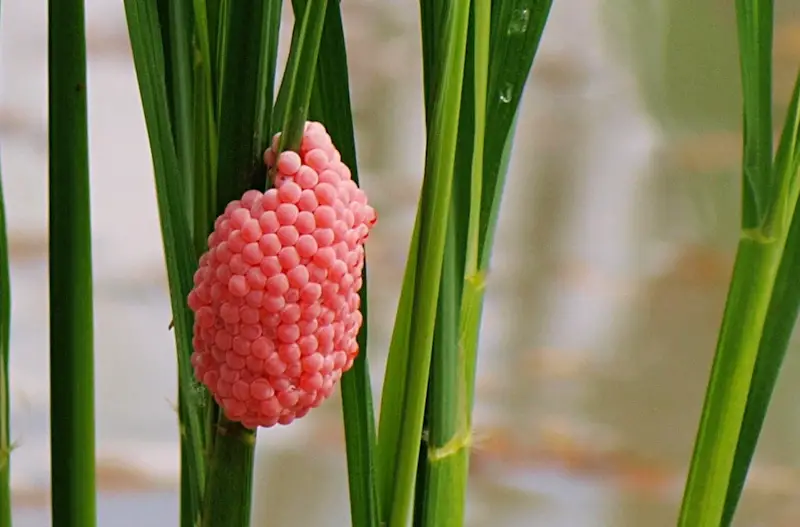
What are snail eggs?
Snail eggs are the reproductive cells produced by snails. Unlike other animals, snails lay their eggs in a protective casing called a “clutch.” These clutches can contain anywhere from a handful to hundreds of individual eggs, depending on the species of snail.
Physical Characteristics
Snail eggs come in all sorts of shapes and sizes. Some are round, while others may be more oblong or conical. The color of the egg can also vary, with some being pinkish or yellowish and others being brown or black.
One unique feature of snail eggs is that they are often covered in a jelly-like substance. This serves as both protection and nourishment for the developing embryos inside.
Formation
Snail eggs are formed internally by female snails through a process called oviposition. In this process, the female releases an egg into her reproductive tract, where it is fertilized by sperm from a male snail before being encased in jelly to form a clutch. Once formed, the clutch is deposited in a safe location where it can develop without being disturbed.
Location
The specific location where snail clutches are laid depends on the type of snail and its habitat. Some terrestrial species may lay their clutches under leaf litter or logs, while aquatic species may attach them to rocks or vegetation near the water’s edge.
Interestingly enough, some species have developed unique strategies for laying their clutches in hard-to-find locations to protect them from predators. For example, some land-based species may bury their clutches underground to keep them hidden from view.
Differences Between Species
While all snails produce similar-looking eggs, there are significant differences between different types of snails when it comes to how they lay their clutches. For example, some species may lay their eggs in a single large clutch, while others may produce several smaller clutches over time.
Additionally, some species may be more particular about the location of their clutch than others. Some aquatic species, for example, may attach their clutches to specific types of vegetation or rocks that they prefer.
Overall, snail eggs are a fascinating and important part of the snail life cycle. Understanding how they form and where they are laid can help us better appreciate these unique creatures and the role they play in our ecosystem.
Types of Snail Eggs
Snail eggs come in a variety of forms, and each type has unique features that make them suitable for different environments. Some snails lay their eggs above ground, while others prefer to lay them underwater. Here are some of the most common types of snail eggs and what makes them so special.
Terrestrial Snail Eggs
These are the most common type of snail eggs and are laid above ground in a range of habitats. Terrestrial snails lay their eggs in clusters or masses that can contain dozens or even hundreds of individual eggs. The size, shape, and color of these egg masses can vary widely depending on the species.
For example, some terrestrial snails lay small, round white or yellow eggs that can be mistaken for seeds or grains of sand. One unique feature of terrestrial snail eggs is that they are often covered with a mucous layer that protects them from drying out.
This layer also helps to keep the eggs together in one place until they hatch. In some cases, this mucous layer can be thick enough to make it difficult for predators like birds to break into the egg mass.
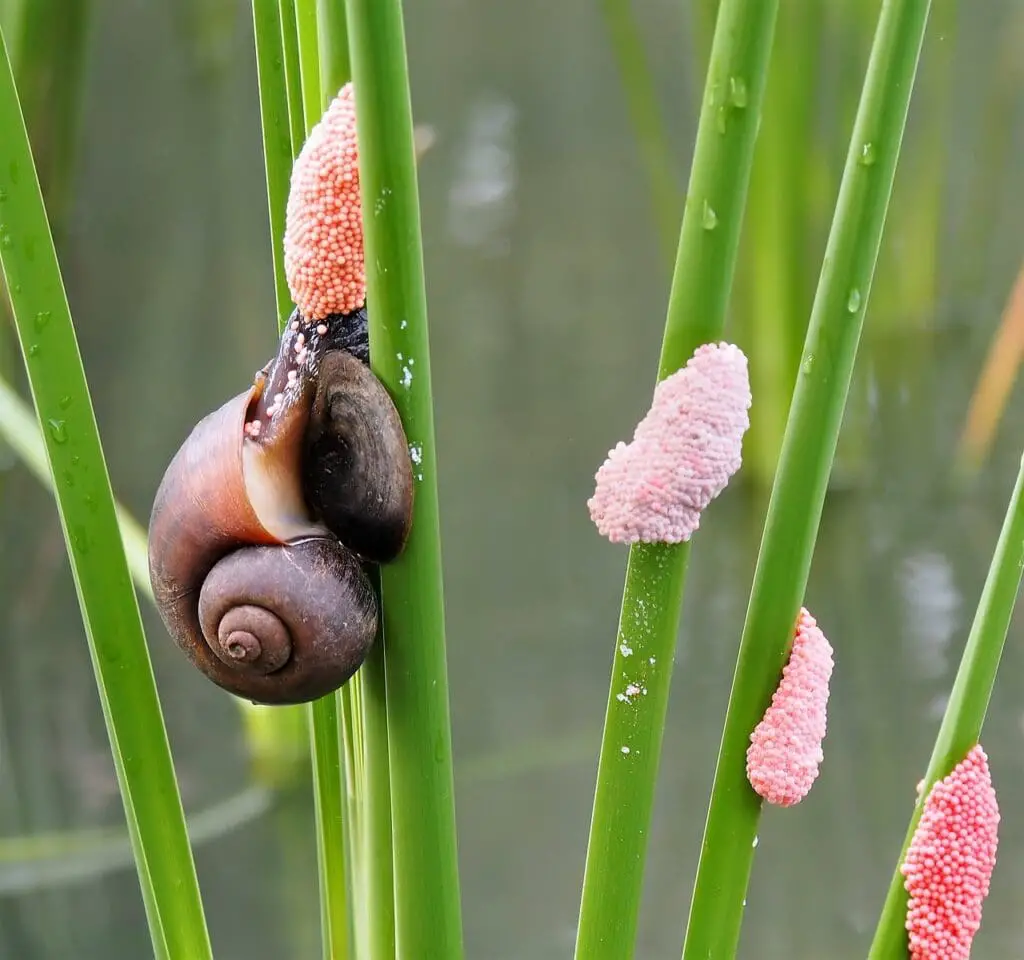
Aquatic Snail Eggs
Aquatic snails lay their eggs underwater, which means they need to have adapted to survive in this environment. These eggs come in a variety of shapes and sizes and are often attached to submerged vegetation or other surfaces. One interesting feature of aquatic snail eggs is that they can be adapted for survival in different water conditions.
Some species produce large gelatinous masses that help protect their offspring from predators like fish and insects. Others lay individual capsules covered with a hard shell-like substance made up primarily of calcium carbonate.
Land-based Water Snails
Land-based water snails are particularly interesting because they need moist environments to breed but cannot lay their eggs underwater. Instead, they lay their eggs in a gelatinous mass that can be found on rocks or other surfaces at the water’s edge. These eggs are often translucent and can be mistaken for bubbles or drops of water.
One unique feature of land-based water snail eggs is that they contain a large amount of yolk, which provides nutrition to the developing embryo. This extra yolk allows these snails to breed successfully in environments where there may not be enough food available for their offspring.
Tree Snails
Tree snails are a type of terrestrial snail that lives primarily in tropical forests. They lay their eggs high up in trees or other elevated surfaces, which helps to protect them from predators like ground-dwelling animals.
One interesting adaptation of tree snail eggs is that they are often brightly colored and covered with intricate patterns. Some scientists believe this is an example of “aposematism,” which is when animals use bright colors to warn potential predators that they are toxic or dangerous.
Parasitic Snails
Some species of snails have evolved unique reproductive strategies, including forming close parasitic or symbiotic relationships with other marine organisms. These interactions showcase the remarkable adaptability of snails within their ecosystems.
Overall, the diversity in types and features of snail eggs highlights just how adaptable these creatures can be. By laying their offspring in different environments and developing unique adaptations for each type, these incredible creatures have been able to survive for millions of years.
Reproduction and Fertilization
Snails are hermaphrodites, meaning they possess both male and female reproductive organs. However, some cannot self-fertilize their eggs and they must mate to fertilize each other’s eggs.
Courtship and Mating Rituals
Snails usually mate during the night or in the early morning when temperatures are cooler and moisture levels are high. The mating process begins with a “courtship dance” between two snails where they touch each other with their tentacles.
This dance can last anywhere from a few minutes to several hours. Once the snails have decided to mate, they extend their love darts towards each other.
Love darts are sharp calcareous structures that pierce the partner’s body and transfer hormones that increase the chance of egg fertilization. After exchanging love darts, each snail will lay its eggs in a nest dug into the soil or substrate.
The number of eggs laid can vary depending on the species of snail; some species lay only a few eggs while others can lay hundreds at once. Once laid, both male and female snails play an important role in fertilizing these eggs.
They use their reproductive organs called gonads to release sperm into the environment where it may come into contact with another snail’s egg or sperm from another mating partner. The fertilized egg then goes through many developmental stages before hatching into a juvenile snail.
Diverse Reproductive Strategies
In some species, embryos develop while still within their parent’s body before being laid as fully-formed baby snails. Interestingly, some species of marine gastropods have developed different strategies for reproduction such as laying capsules containing multiple embryos instead of individual eggs or producing live young directly instead of laying eggs altogether!
Despite being hermaphrodites themselves, successful reproduction for snails requires mating with another partner who will exchange love darts with them before laying their respective clutches of eggs. Both male and female snails play an essential role in fertilizing these eggs, and their gonads release the sperm into the environment where it can come into contact with another snail’s egg to begin the process of creating a new generation of snails.
Hatching process
The Hatch is On!
Snail eggs are fascinating to observe, especially when they hatch. The hatching process varies depending on the type of snail egg.
Terrestrial snails lay their eggs on land, while aquatic snails lay them in water. Both types require a specific set of conditions for the eggs to hatch.
When it comes to terrestrial snails, the eggs have a hard outer shell that protects them from drying out. The eggs are usually laid in clusters, and each cluster can contain up to several dozens of eggs.
The hatching process for these types of snail eggs can take anywhere from two weeks to a month or more. Aquatic snail eggs, on the other hand, are usually laid in jelly-like masses that float on top of water bodies like ponds and streams.
They resemble small bubbles and are often attached to aquatic plants or submerged rocks. These types of snail eggs hatch within three days up to two weeks after being laid.
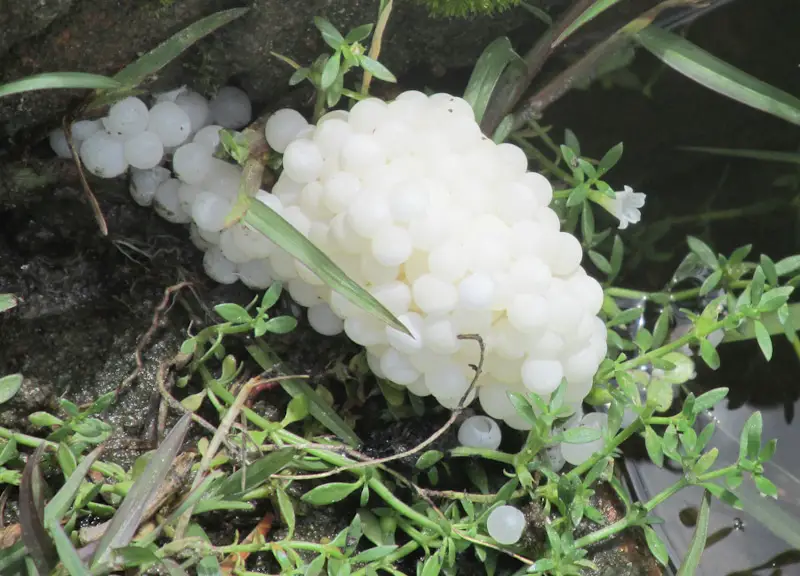
Factors Influencing Hatching Success
Several factors influence the success rate of snail egg hatching. Temperature is one such factor that plays an important role in determining whether or not an egg will hatch successfully. If the temperature is too high or too low, it can affect the development inside the egg which can lead to death before hatching occurs.
The availability of moisture is another factor influencing hatching success for terrestrial snails’ well-being because without enough moisture, their shells begin to dry out and become brittle as time goes by which leads them unable to survive and hatch successfully. For aquatic snails’ well-being and survival rates upon hatching time; water quality is crucial because if there are pollutants present in the water body where these types of snail’s lay their eggs this could lead them unable to emerge from their jelly-like enclosures leading ultimately towards death.
In addition to these factors, predators can also significantly affect hatching success. Predators such as birds, insects, and other animals often prey on snail eggs.
Some species of snails have developed unique defense mechanisms to protect their eggs from predators. However, some species of snail eggs are more vulnerable than others.
What Happens Next?
Once the egg hatches, a tiny snail emerges from it. The baby snail is usually just a few millimeters long and looks like a miniature version of its adult form.
Snails grow at different rates depending on the species and their environment. For example, terrestrial snails can take up to two years to reach maturity while aquatic ones might grow faster due to more abundant food sources in water bodies around them which could help them grow bigger and ultimately reproduce earlier than land-dwellers counterparts.
Observing the hatching process of snail eggs can be an exciting experience for those interested in these fascinating creatures. Understanding the factors that influence hatching success can provide insight into why some species are more successful than others at reproducing successfully while also giving us an idea about how crucial environmental conditions could be for this process to be successful.
Snail Egg Predators
As with any other species, snail eggs are also at risk of being preyed upon by a variety of predators. These predators can include birds, insects, mammals, and other invertebrates that find snail eggs to be a delicious snack. One of the most common snail egg predators is the ground beetle.
These beetles are known for their love of snails and their eggs. They will scour the ground looking for these tasty treats and will eat as many as they can find.
Other common predators include ants, slugs, and even some types of birds. Aside from these usual suspects, some less likely predators also prey on snail eggs.
For example, some species of fish have been known to feed on aquatic snail eggs that are laid in ponds or lakes. Additionally, some larger animals like raccoons or foxes will also consume snails and their eggs if given the chance.
Protecting Their Offspring
Despite the many threats that exist against their eggs, certain species of snails have developed unique strategies to protect their offspring from these dangers. For example, certain land-based species lay their eggs in underground burrows or crevices where they are less likely to be found by predators. Other terrestrial species have evolved with defensive shells that protect not only themselves but their unborn offspring as well.
This makes it more difficult for potential predators to get through the defenses to get at the nutritious meal inside. Aquatic snails also have unique strategies for protecting their young from harm.
Some will lay their egg sacs on aquatic plants that provide extra protection from potential attackers while others may bury them in sand or mud where they cannot be easily seen by passing fish or other predatory creatures. In addition to these physical adaptations some species use chemical deterrents to discourage would-be predators from eating their offspring altogether; this may involve creating a poisonous substance that is unpleasant to predators or leaving a pheromone scent that warns other snails of the danger.
Discussion
While it’s clear that snail eggs are at risk of being eaten by many different types of predators, it’s also evident that these tiny creatures have developed some amazing adaptations to help protect their young. Whether it’s laying their eggs in secure, underground burrows or creating poisonous substances to deter animals from eating them, these little animals have found ways to ensure the survival of their offspring in a world full of dangers. It’s fascinating to see how evolution has shaped the strategies used by different species of snails to protect their young and ensure the continuation of their populations.
It’s quite remarkable how such small and seemingly insignificant creatures can possess such sophisticated defense mechanisms against larger predators in an ecosystem where they are likely considered prey themselves. Understanding more about snail egg predators and the various strategies used by different species can help us appreciate even more the intricate balance between predator and prey in nature.
Uses for Snail Eggs
Food
Snail eggs are considered a delicacy in some cultures, particularly in France where they are known as “escargot caviar”. They are usually served raw and can be sprinkled on top of salads or used as a garnish for seafood dishes. Some people also enjoy them with crackers or bread.
However, snail eggs are not widely consumed due to their high price and limited availability. In Japan, snail eggs are considered a gourmet food item and can be found in high-end sushi restaurants.
They have a unique texture that is similar to salmon roe but with a more subtle flavor. These tiny eggs add color and texture to sushi rolls and other Japanese dishes.
Cosmetics
Snail egg extract is becoming increasingly popular in the beauty industry due to its potential anti-aging properties. It contains glycolic acid which helps to exfoliate the skin, as well as elastin and collagen which promote elasticity and firmness.
Some skincare products containing snail egg extract include face creams, serums, masks, and eye creams. They claim to reduce wrinkles, fine lines, acne scars and pigmentation.
Biomedical Research
Snail eggs are also being studied for their potential use in biomedical research. Their ability to regenerate their tissues quickly makes them ideal subjects for researching tissue regeneration after injury or disease.
Scientists have even managed to grow artificial tissues from snail eggs in the lab. This could lead to new treatments for conditions such as heart disease or spinal cord injuries.
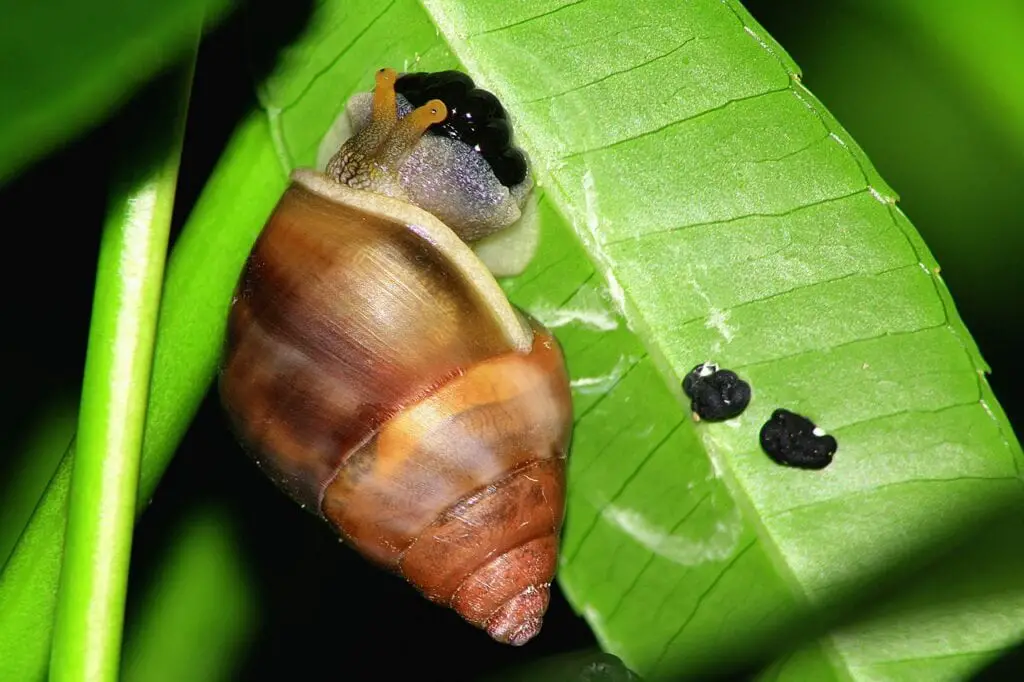
Fertilizer
Snail eggshells can be used as an organic fertilizer due to their high calcium content which promotes healthy plant growth. Crushed shells provide slow-release nutrients over time and also help regulate soil pH levels. Gardeners recommend crushing snail eggshells and mixing them into potting soil or sprinkling them on top of garden beds.
Art
Believe it or not, snail eggs can also be used in art! Some artists have collected and preserved snail eggs in resin or other materials to create unique pieces. These artworks can be quite striking when the light catches the delicate shapes and patterns of the eggs.
While snail eggs are not commonly consumed, they have a variety of interesting uses ranging from gourmet food to biomedical research and art. Who knows what other potential uses we will discover in the future?
Conclusion
Snail eggs are a fascinating and intricate part of a snail’s life cycle. From their formation to hatching, these tiny eggs play an essential role in the survival of many snail species. In this article, we have explored the different types of snail eggs, their physical characteristics, and the processes involved in their reproduction and hatching.
One key takeaway is that snails are incredibly resilient creatures when it comes to protecting their offspring. They have developed many strategies to ensure the safety of their eggs from predators such as birds and other animals.
For instance, some snails lay their eggs in hard-to-reach locations or create protective barriers around them. It’s important to learn more about snail eggs because they play a crucial role in our ecosystem as well.
Snails play an essential role as decomposers in many ecosystems by breaking down dead plant matter into nutrients that enrich soil quality. Snail populations can also help control insect populations by consuming insect larvae.
However, human activities such as pollution and destruction of natural habitats can threaten the existence of many species of both snails and other animals that depend on them for survival. It’s crucial for us to understand more about these small yet vital organisms so we can make informed decisions about how best to conserve our environment for future generations.
Studying the intricacies of snail egg development and survival is not only fascinating but also critically important for understanding our ecosystem’s diversity and health. By appreciating these small yet complex creatures, we may become motivated towards making positive changes that benefit all forms of life on earth – no matter how tiny or unassuming they may seem!
Correction Notice
An earlier version of this article suggested that some carniverous snails lay their eggs inside other animals as a form of parasitism. This has been corrected to accurately reflect that some snail species form parasitic or symbiotic relationships with other marine organisms, without the direct insertion of eggs into other animals. We are committed to providing accurate and reliable information and appreciate the feedback from our readers that helps us achieve this goal.

